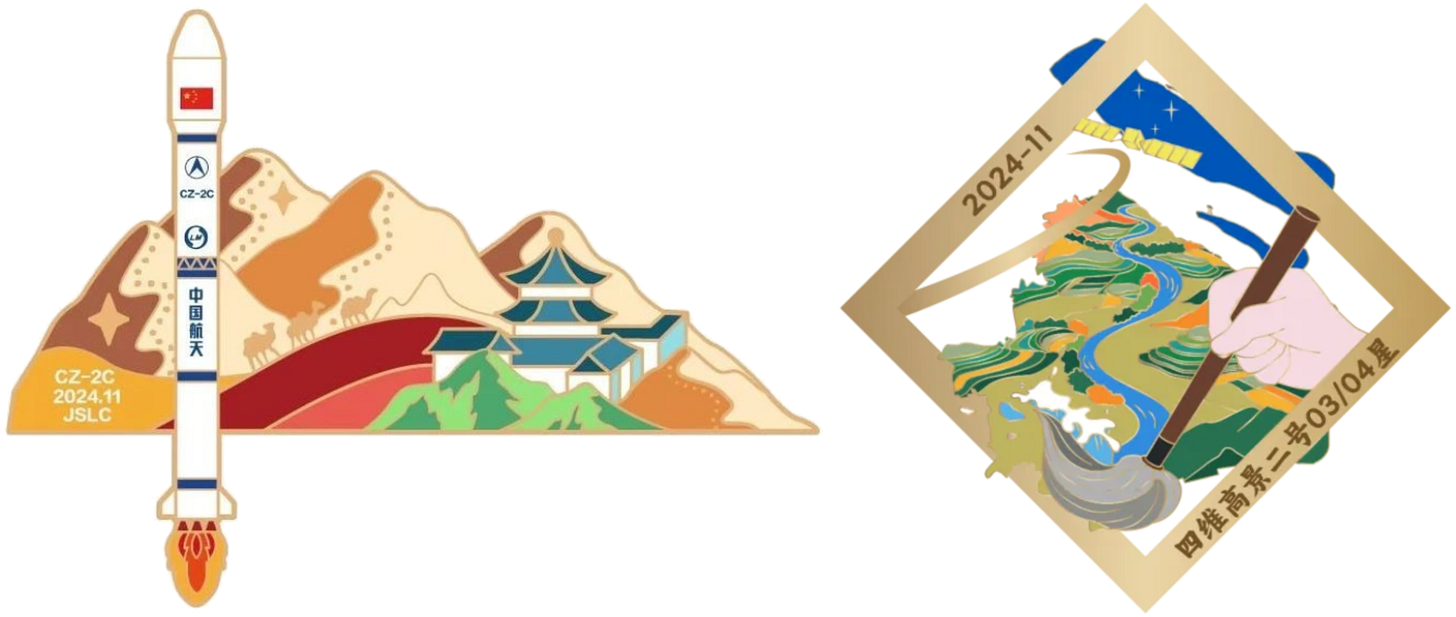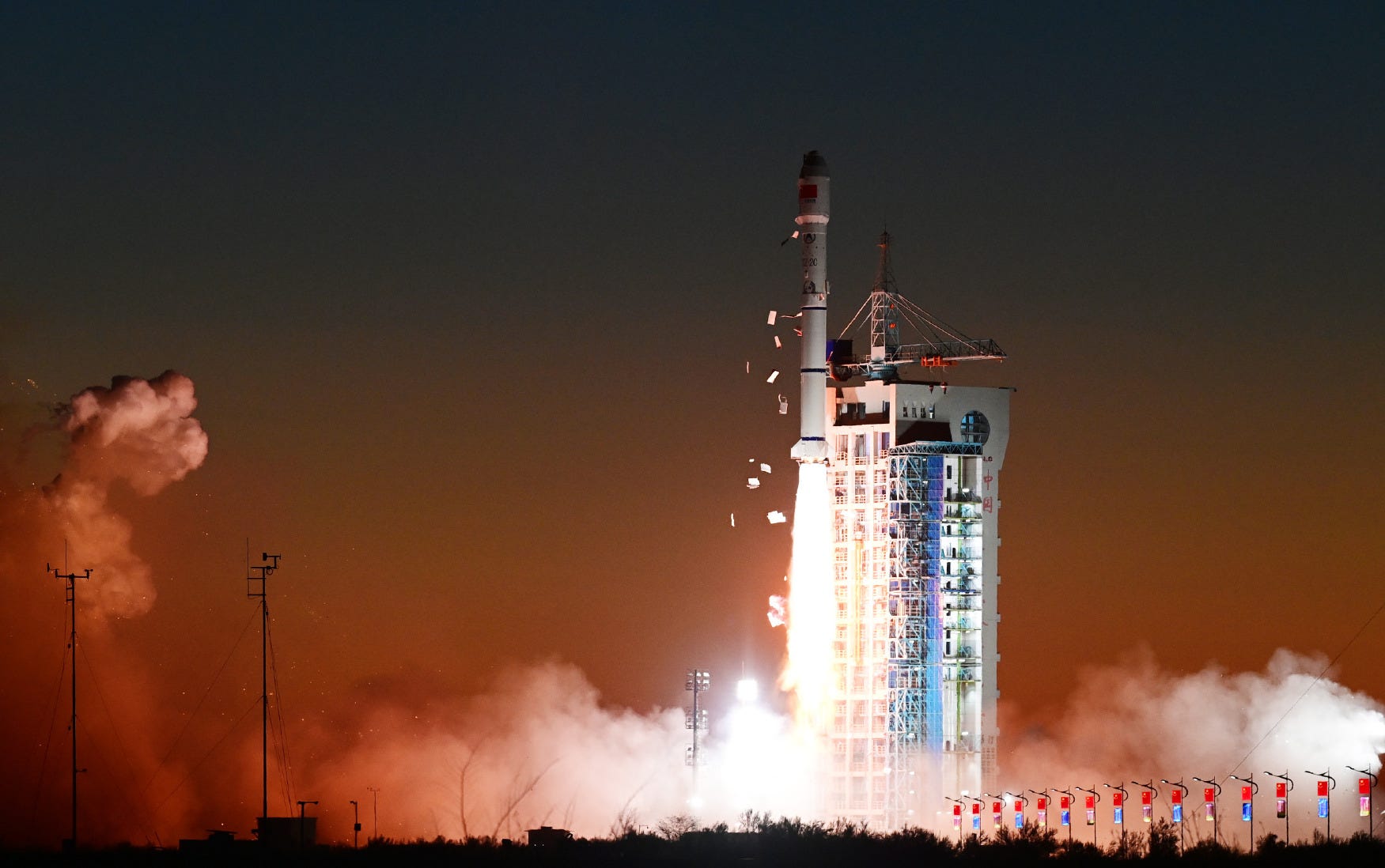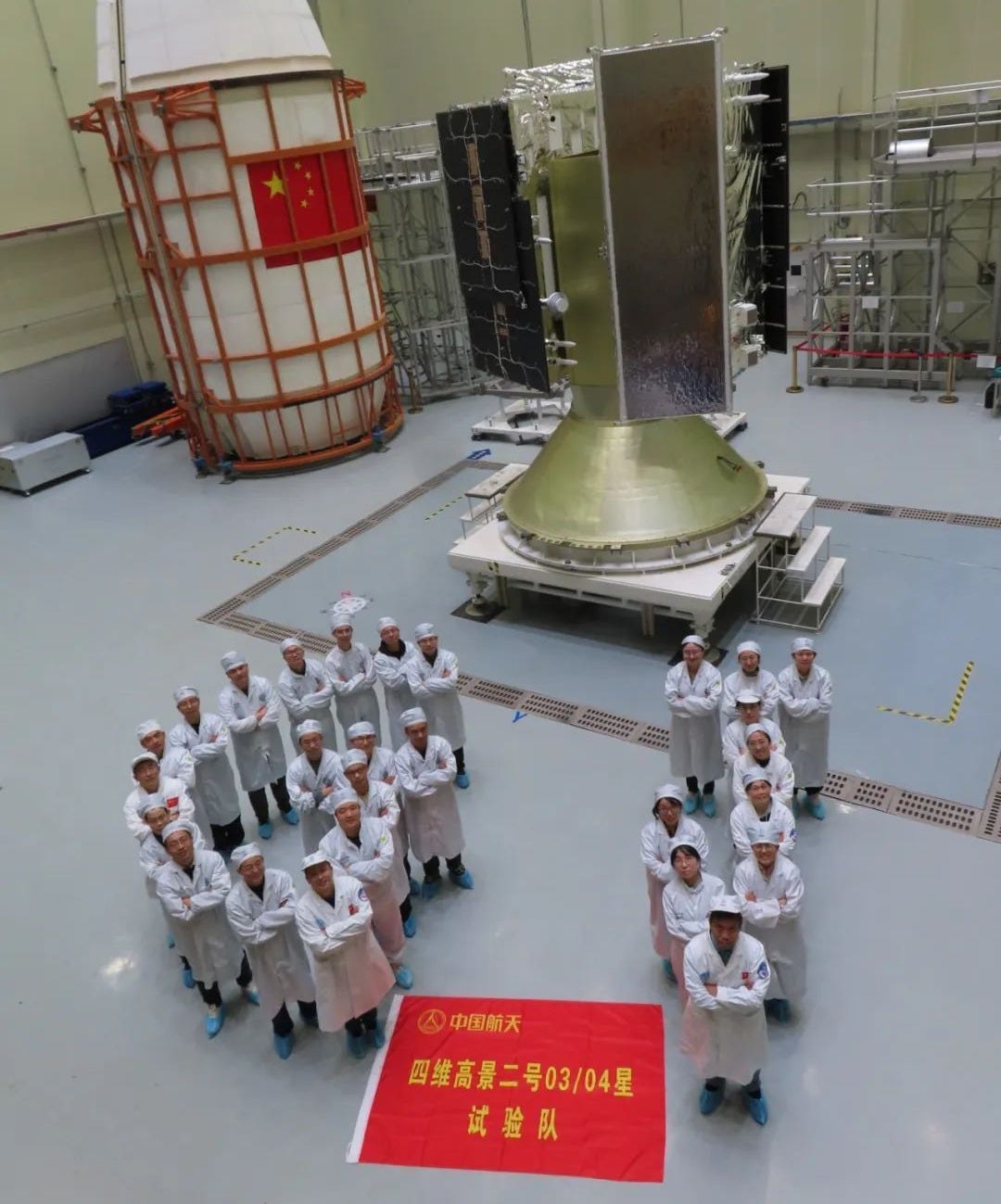New Commercial Imaging Duo! [Long March 2C Y83]
Two new commercial remote sensing satellites were delivered to sun-synchronous orbit.
A Long March 2C lifted off from a very cold Launch Area 4 at Jiuquan Satellite Launch Center at 07:39 am China Standard Time (November 25th), or 23:39 pm Universal Coordinated Time (November 24th), and headed to sun-synchronous orbit.
Two remote sensing satellites were riding atop of the vehicle, called Siwei Gaojing-2 03 (四维高景二号03) and Siwei Gaojing-2 04 (四维高景二号04), also referred to as SuperView Neo 2-03 and 04 in English. These satellites will be operated by China Siwei Survey and Mapping Technology (中国四维测绘技术有限公司), with them having been developed by the China Academy of Space Technology and the Shanghai Academy of Spaceflight Technology.
Once operational the two satellites will provide all-day, all-weather, high-resolution imagery via the use of a phased array radar instrument. Data from the satellites will be used in the fields of urban security, emergency management, natural resource monitoring, as well as ocean and maritime affairs. Demand for commercial imaging and surveying is also expected to be relieved by the new spacecraft, primarily for China’s developing regions.
According to the Shanghai Academy of Spaceflight Technology’s post-launch blog post, the two new Siwei Gaojing-2 satellites will operate with a pair launched back in July 2022. While working in a group the four spacecraft will quickly send early warning and image data for areas at risk of or suffering from natural disasters.

Due to the extremely cold weather, regularly below freezing, at the Jiuquan Satellite Launch Center during the later months of the year, today’s Long March 2C was equipped with extra thermal insulation material on the fairing, interstage, and engine section to keep propellants and consumables from freezing. This thermal insulation falls away harmlessly during liftoff.
This was the 81st launch of the Long March 2C, and was the 547th launch of the Long March launch vehicle series. Along with these, this was also the 57th launch from China in 2024.
Liftoff video via 我们的太空 and 航天五线谱 on Weibo.
As of updating (January 15th 2025), the Y number for this launch is believed to be Y83.
Chinese companies, state-owned and private, use Y followed by a number to serialize launch mission numbering, similar to NASA with STS.
November 26th Update: This launch is rumored to have been Y88, an image of the satellites has also been added to the article.
Check out the previous Long March 2C launch
Another Commercial Imaging Group [Long March 2C Y55]
A Long March 2C blasted off from Launch Area 4 at the Jiuquan Satellite Launch Center at 11:39 am China Standard Time, or 03:39 am Universal Coordinated Time, on November 9th. This launch had the vehicle flying to a sun-synchronus orbit carrying four satellites.
What is the Long March 2C?
This section is for those less familiar with China's Long March series of launch vehicles.
The Long March 2C is one of the oldest launch vehicles from China performing missions regularly to low earth and sun-synchronous orbits by the China Academy of Launch Vehicle Technology. The two stages of the launch vehicle both burn Dinitrogen Tetroxide and Unsymmetrical Dimethylhydrazine.
The payload capacity of the launch vehicle is currently as follows:
3,850 kilograms to low Earth orbit
1,900 kilograms to a sun-synchronous orbit
1,250 kilograms to a geostationary transfer orbit
The first-stage is powered by four YF-21C engines, which generate 302 tons of thrust burning Dinitrogen Tetroxide and Unsymmetrical Dimethylhydrazine. The second-stage is powered by a single YF-22E engine and four YF-23C verniers that generate 80 tons of thrust while also burning Dinitrogen Tetroxide and Unsymmetrical Dimethylhydrazine.
On the launch pad, the Long March 2C is 42 meters tall and weighs 233,000 kilograms when fully fuelled. The first and second stages have a diameter of 3.35 meters, with the fairing having a diameter of either 3.35 or 4.2 meters.
So far the Long March 2C has flown from all three inland launch sites, the Jiuquan Satellite Launch Center, the Taiyuan Satellite Launch Center, and the Xichang Satellite Launch Center.






![Another Commercial Imaging Group [Long March 2C Y55]](https://substackcdn.com/image/fetch/$s_!Pcg0!,w_1300,h_650,c_fill,f_auto,q_auto:good,fl_progressive:steep,g_auto/https%3A%2F%2Fsubstack-post-media.s3.amazonaws.com%2Fpublic%2Fimages%2F89348f46-797e-4d91-85eb-f80d48445eba_2249x1265.png)
